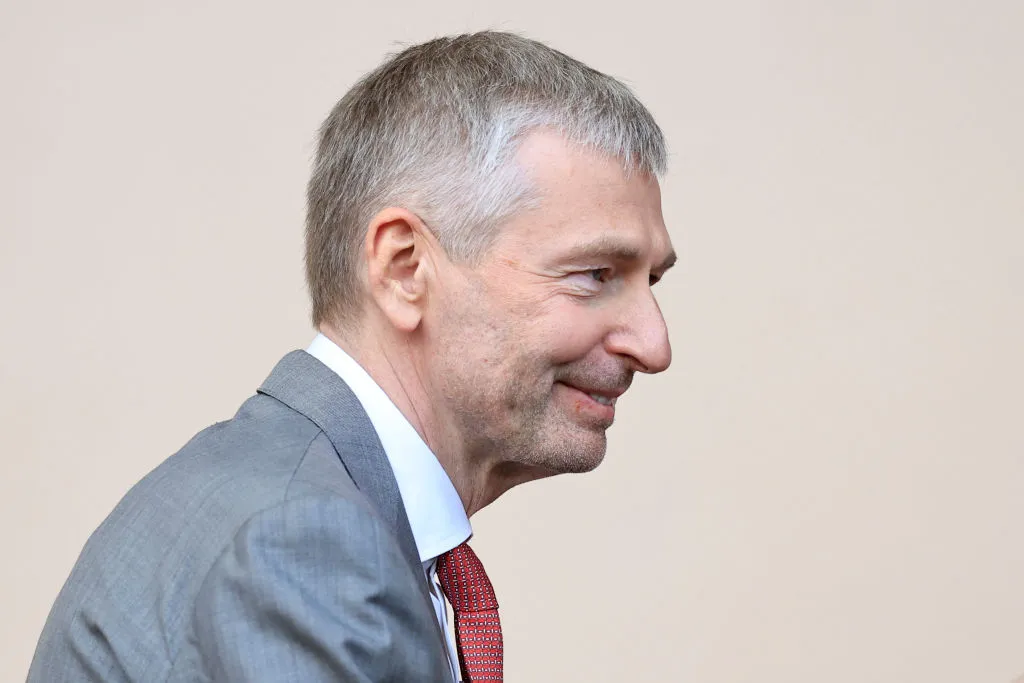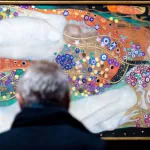
It can’t be easy to listen to a lawyer list a series of alleged times you’ve been fleeced and testify that each time you thought the man holding the shears had your best interests at heart. Yet, that is the best summary for the testimony that Mikhail Sazonov, the former chief financial officer for Russian billionaire Dmitry Rybolovlev, gave in the Accent Delight International (ADI) v. Sotheby’s trial in Manhattan federal court on Wednesday.
Sazonov was behind the wheel at ADI and Xitrans, the two entities though which Rybolovlev bought art from Swiss art dealer Yves Bouvier. While Sotheby’s is named in the lawsuit, the blame for Rybolovlev being overcharged by $1 billion was laid primarily at the feet of Bouvier and Sazonov by both the legal teams of the plaintiff and the defendant on Wednesday. Bouvier, according to the legal teams, for allegedly buying works from under Rybolovlev’s nose then passing them on to the budding collector with a whopping markup (all the while taking his two percent advisor’s commission) and Sazonov for failing to notice it.
(Bouvier, who is not a party to the ongoing trial, has repeatedly denied any wrongdoing, has never been convicted of a criminal offense related to his business dealings with Rybolovlev, and in December he and the Russian billionaire reached a settlement over various legal disputes in Switzerland.)
Throughout the day, you could be forgiven for wondering whether Sotheby’s was on trial at all—attorneys for both sides took their time aruging that Bouvier was constantly lying to Sazonov, and that Sazonov took everything Bouvier said at face value. The defense went as far as to make sure the jury knew that Rybolovlev was aware of every communication between Sazonov and Bouvier and signed off on every transaction.
Of the multiple schemes and fabrications attributed to Bouvier in court the most audacious involved Rybolovlev’s acquisition of Leonardo da Vinci’s Salvator Mundi, which set the record for the most expensive painting ever sold at $450.3 million in 2017 at Christie’s.
The Mundi was first brought to Rybolovlev’s attention not by Bouvier, but rather by a business associate named Seth Harrison, according to a series of emails presented to the jury by Sotheby’s attorney Sara Shudofsky, a partner at white shoe firm Arnold & Porter. The emails were primarily between Harrison and Sazonov, but included a forwarded message between Harrison and Ashton Hawkins, who was described as a “point of contact” for the Mundi sellers, in which the beginning stages of a potential sale to a Rybolovlev family trust were discussed.
However, instead of moving forward with Hawkins’ proposed plan, Sazonov testified, he instead consulted Bouvier—our trusted agent and advisor on all things art,” in Sazonov’s words. Bouvier’s apparent advice? A bait and switch.
According to Sazonov’s testimony and evidence presented in court by Rybolovlev’s lawyer, Zoe Salzman, Bouvier advised against showing any interest. That would just cause the sellers to inflate the price. After all, they would be dealing with a billionaire. Instead, according to Sazonov, Bouvier allegedly told Sazonov that he would “go behind the scenes and act as if he was looking for someone else in order to get a better price.”
During the cross examination of Sazonov, Shudofsky made clear her interpretation of Bouvier’s actions: A meeting with Rybolovlev and the Mundi sellers should be arranged. Then, according to an e-mail apparently written by Bouvier and shown to the jury, the sellers should be informed that their Russian billionaire is no longer interested. This will “shake their confidence,” “break their morale” and lead to a deflated price, he allegedly wrote. In the meantime, Bouvier described what he called in the email his “alibi,” a French expat collector obsessed with secrecy and with much less money than Rybolovlev.
“Did you ever have reason to doubt the advice Mr. Bouvier gave you?” Salzman asked Sazonov. His simple answer: “No.”
What followed were a string of emails presented to the jury in which Salzman alleged Bouvier pretended to be in merciless negotiations with the Mundi sellers. “Another top collector is interested” he supposedly wrote in one of the emails, “I think M’Salini [sic], Italian Bouygues of construction. Important private museum.” In another email, Bouvier wrote, “He’s a real tough one but I am fighting hard and taking as much time as needed,” as offer after offer, $90 million, $100 million, $120 million, was “rejected.” Eventually Rybolovlev nabbed the painting at $127.5 million. In an email, Bouvier offered to lower his normal commission fee to one per cent, over a million dollars. After all, he didn’t find the painting and, according to Sazonov, that was part of his job.
Salzman argued that, unbeknownst to Sazonov and Rybolovlev, Bouvier had already bought the Mundi himself for $83 million, then marked up the painting by $44.5 million, before selling it to Rybolovlev’s company.
During cross examination, Shudofsky attacked Sazonov for his apparent lack of due diligence in dealing with Bouvier. “Did you ever ask around about who the purported sellers of these works were?” she asked. “Did you ever ask Mr. Bouvier for documents showing how much he paid the original owners? Did you think that these original owners would sell tens of millions of dollars of art without a contract? You’ve been in finance for years.”
“That’s how I thought it worked in the art world,” Sazonov said.
As for Sotheby’s, the supposed defendant in the case, there was little mention other than the implication that, while Bouvier and Sotheby’s specialist Samuel Valette seemed in emails to have a formal, strictly business sort of relationship, the two were actually friends.
Though Bouvier is not a party to the current trial, he has repeatedly denied any wrongdoing in relation to Rybolovlevand ADI.
“The allegations being made against Mr. Bouvier in the New York proceedings have already been rejected by authorities all around the world. Since starting legal action against Mr. Bouvier in 2015, all nine of the court cases filed in Singapore, Hong Kong, New York, Monaco and Geneva have been discontinued by the authorities,” Bouvier’s attorneys, David Bitton and Yves Klein of Monfrini Bitton Klein, Geneva, told ARTnews in a statement.
“The final outstanding investigation into Yves Bouvier’s business dealings with Dmitry Rybolovlev started in Switzerland in 2017 and was closed on 6 December 2023 by the Office of the Attorney General of Geneva. The Geneva Public Prosecutor’s Office stated that it conducted a number of hearings which did not provide any evidence to raise sufficient suspicion against Mr Bouvier. The order of discontinuance of the Swiss criminal proceedings after six years of investigation corresponds under Swiss law to a judgment of acquittal of Mr Bouvier issued by a Swiss court, which has binding authority.”
In December, after Swiss criminal proceedings were ended, Bouvier said in a statement, “Today marks the end of a nine-year nightmare. Courts all around the world have now unanimously concluded that I was innocent. I am immensely grateful to my family, friends, lawyers, advisers and all the people who believed in me and helped me to clear my name. I also want to thank the judicial and law enforcement authorities in all countries who have allowed true justice to run its course.”
Editor’s Note, 1/12/2024: This article was updated to include a statement from Yves Bouvier’s attorneys and to include clarifying language around the nature of the allegations made against Bouvier.

